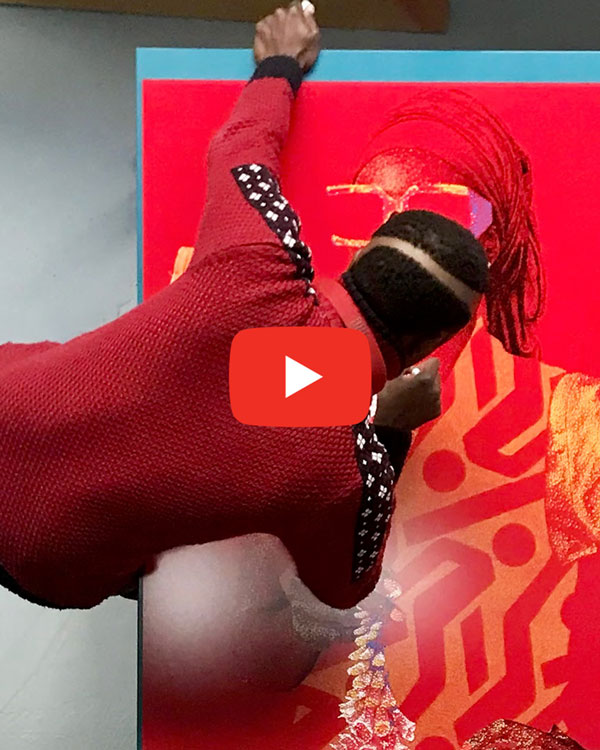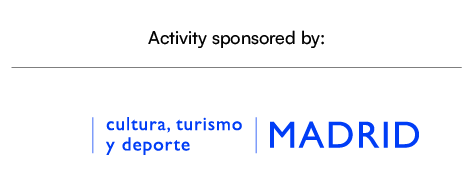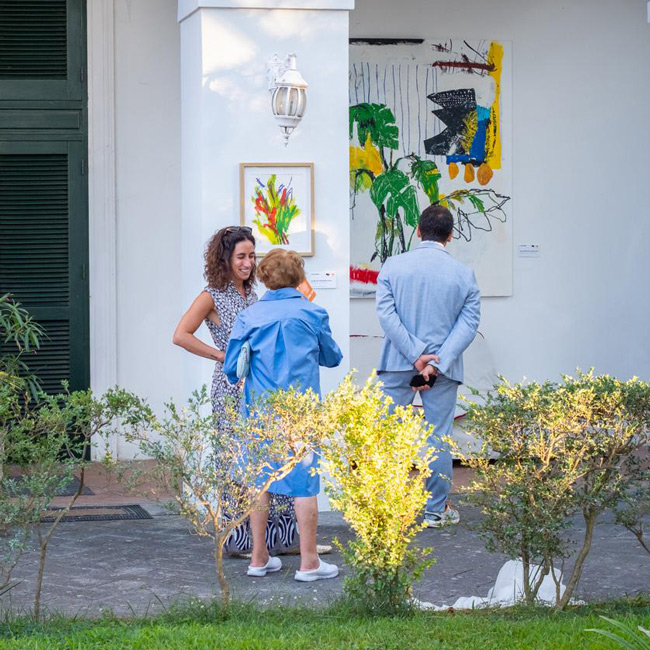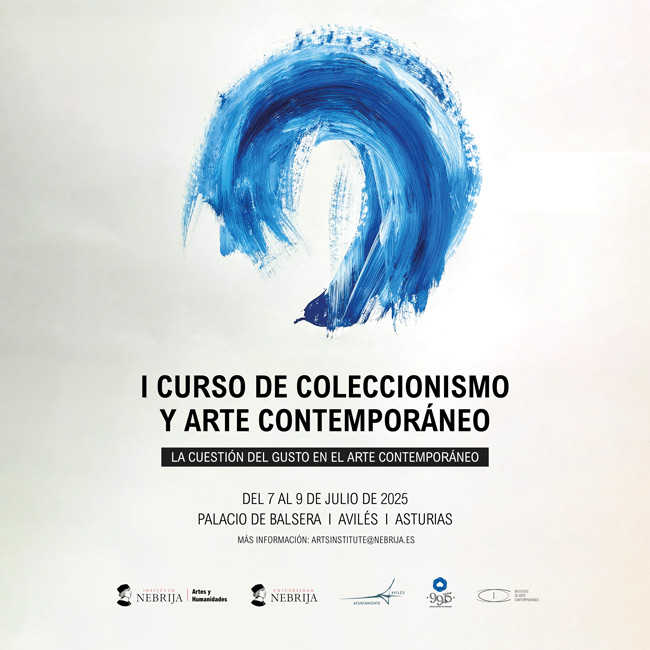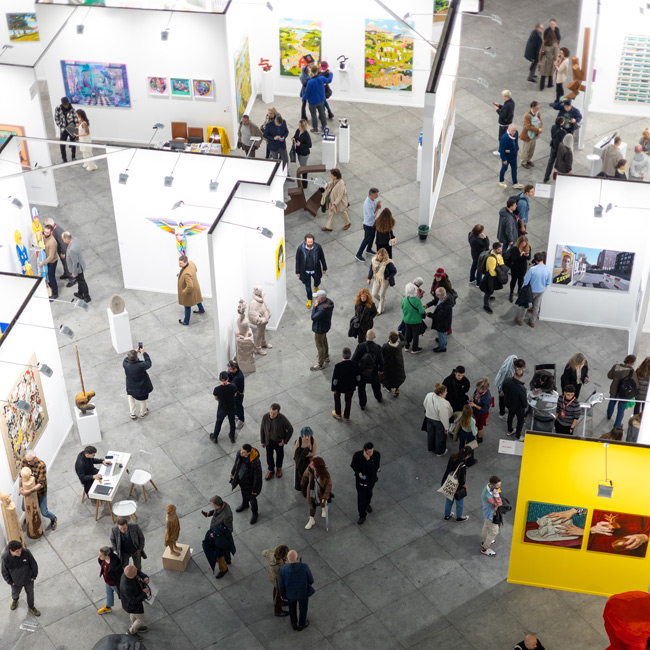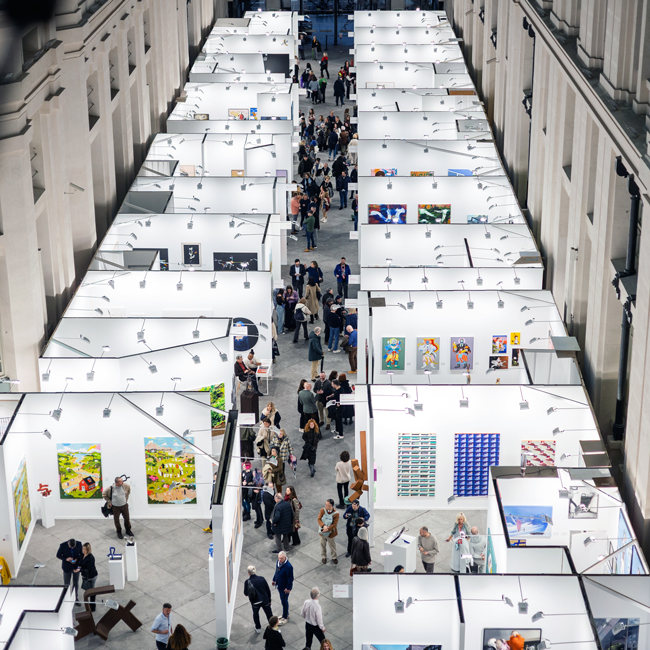EVANS MBUGUA: THE ARCHEOLOGY OF EMOTIONS
Feb 13, 2024
art madrid
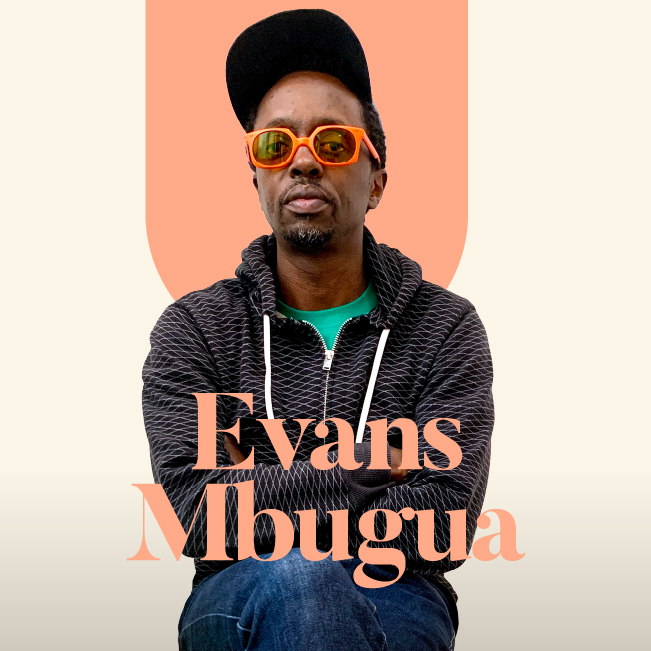
ARTE & PALABRA. CONVERSATIONS WITH CARLOS DEL AMOR
There is a work by Evans Mbugua (Kenya, 1979) titled Live life as a celebration that could serve to define the work of this African-born artist who, before he was twenty, moved to France, integrating what he was, what he lived, what he is and what he lives in his art. In this work in which he appeals to the celebration of life, we see a boy playing or dancing - it doesn't matter if it is one thing or the other because playing and dancing is celebrating - and happy, and this is intuited in the rest of the works, happiness is vindicated through small and inconsequential big things. A chat, a ball, a place.
Evans' work is made up of bits and pieces of what he has been living and collecting, throwing into an imaginary suitcase from which, at a specific moment, he extracts the concrete experience of a lived experience to transfer it to the canvas. We are what we are because we come from where we come from and we are what we are because on the way we transform ourselves in an imperceptible but constant way. For this reason, and continuing with the play on words, in order to define what we will be, we must keep in mind what we were and at the same time not be afraid to build ourselves a little every day with the reality that surrounds us and molds us. Roots, origins, happiness, everyday life, essential ingredients in the vital adventure we undertake every morning.
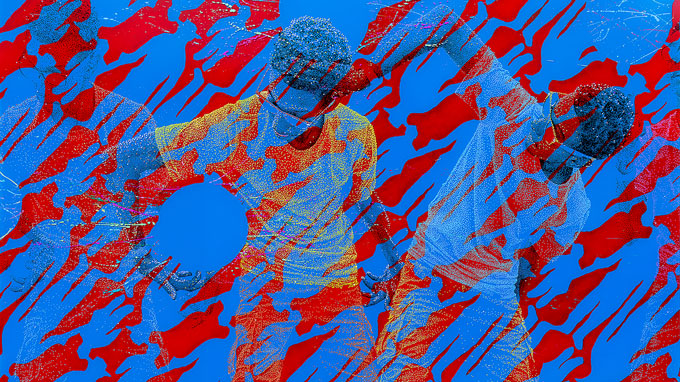
If you had to define your art in one sentence, what would it be?
My work is a contemplation on humanity from the perspective of a Kenyan living in France.
Every artist is what he is because of where he comes from, because of his origins and roots. Could your art be understood without your roots?
My work could be understood without necessarily my roots, because our lives are made up of lived experiences. And I pick out memories which are important to me, and I translate them into artwork. So my roots give me a certain perspective. But I am interested in topics, in ideas, in concepts around the world in which we all live in. So anyone can be able to identify with a childhood gimmick, with a couple dancing, or with a friend taking a selfie.
What is the clash between Kenya and France, and how do they coexist in your work?
There are many differences between Kenya and France, and the most obvious one being the language. I'm an anglophone living in a francophone country. So what I'm interested in is the influence that these differences have on the person that I am and the person that I'm becoming. As time goes by, I believe that our DNA, our human DNA, is embedded with cultures and traditions and histories which have been passed on through generations. And so we are never just one thing. So I'm interested in the contemporary hybrid identity that we become, especially today, accelerated by the Internet, social media, etc, etc.
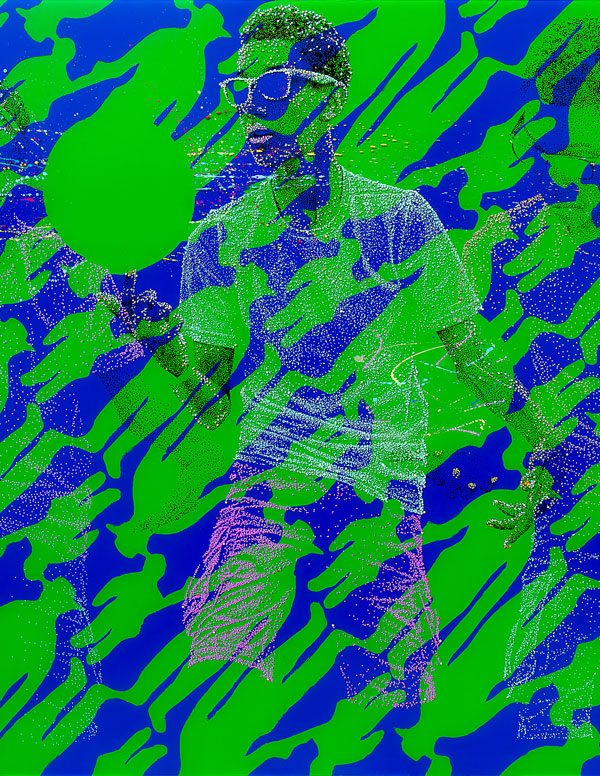
It's curious how everyday, the acts that are part of the routine like a boy playing football or a conversation can be a gesture as exciting as any other and be elevated to the category of art. What importance do you give to the little things?
I'm interested in the everyday, mundane, lived experiences, because these memories construct who we are. Art plays an important role in informing us of human feelings. But I think that art can also be a tool to help us heal, to help us learn how to love. It can be a tool to restore and affirm our humanity. And I think that's what I would want, to use my art to participate in our life, in what we are becoming today. Well, at least I hope that art can be useful to healing.
Is happiness an important ingredient for creation?
Yes. I think I always want to be happy with what I'm creating. In any case, we all want to be happy, and we have a right to find happiness. The Dalai Lama says something like that, and I totally agree.
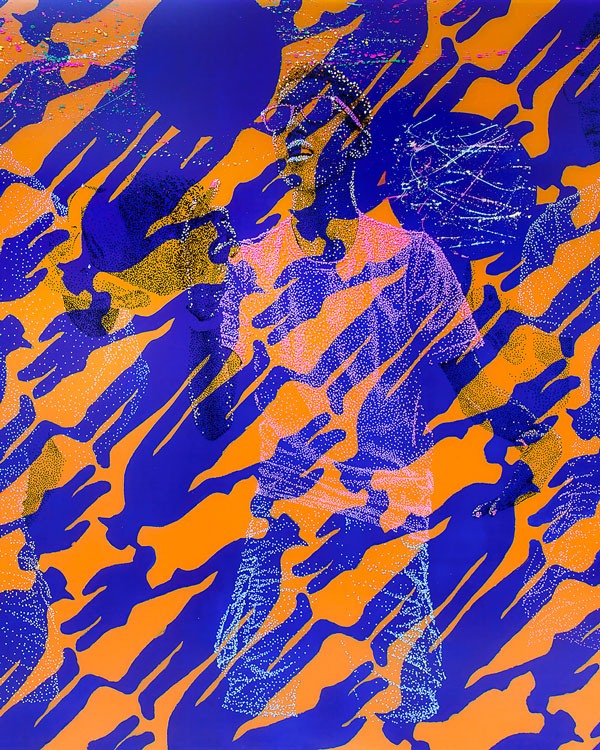
How much of your work is "emotional archaeology"?
It's a new term for me, although probably most of my work adheres to this idea of emotional archaeology, because emotions are the heart of my work.
You have to live to create, should art be a lived art?
For me, every form of art is a living expression. And so for art to exist, it has to be experienced by living beings. So I think one exists because of the other. Art cannot exist without being experienced.
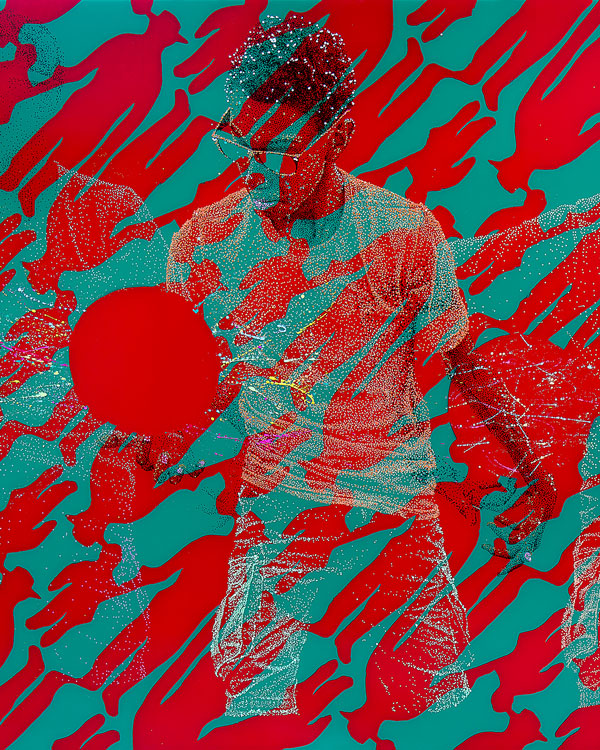
Where do you think your art is going?
My art has evolved a lot recently. The works I will be presenting at Art Madrid 2024 are part of the conclusion of a series about childhood that I started around 2017 called Back to the Future.
From there, I'm going to continue a series that I started recently, in a gradual way, where I'm exploring adolescence or young adulthood. Through a character who is on the African continent, probably in Kenya, and who I would like to place in a period between the sixties and seventies, to also help me dig into my own family history. It is a project that I am very excited about at this stage of my creation.
On the other hand, I want to move from the flat surfaces like paper or methacrylate that I have been using to other more sculptural supports. I have begun to experiment with soft sculpture and textiles, as well as ceramics and bronze.
I think it will be a very exciting future in which I will embark on new projects whose forms of representation occupy a different space than what I have done before, so I am very excited.
Thank you Carlos!
<a href=https://youtu.be/sdc44RTotRk?si=ZUyP-spplJp0e5L1>
